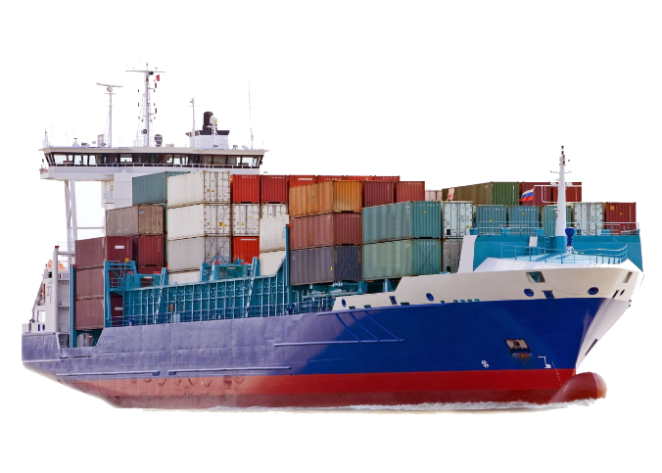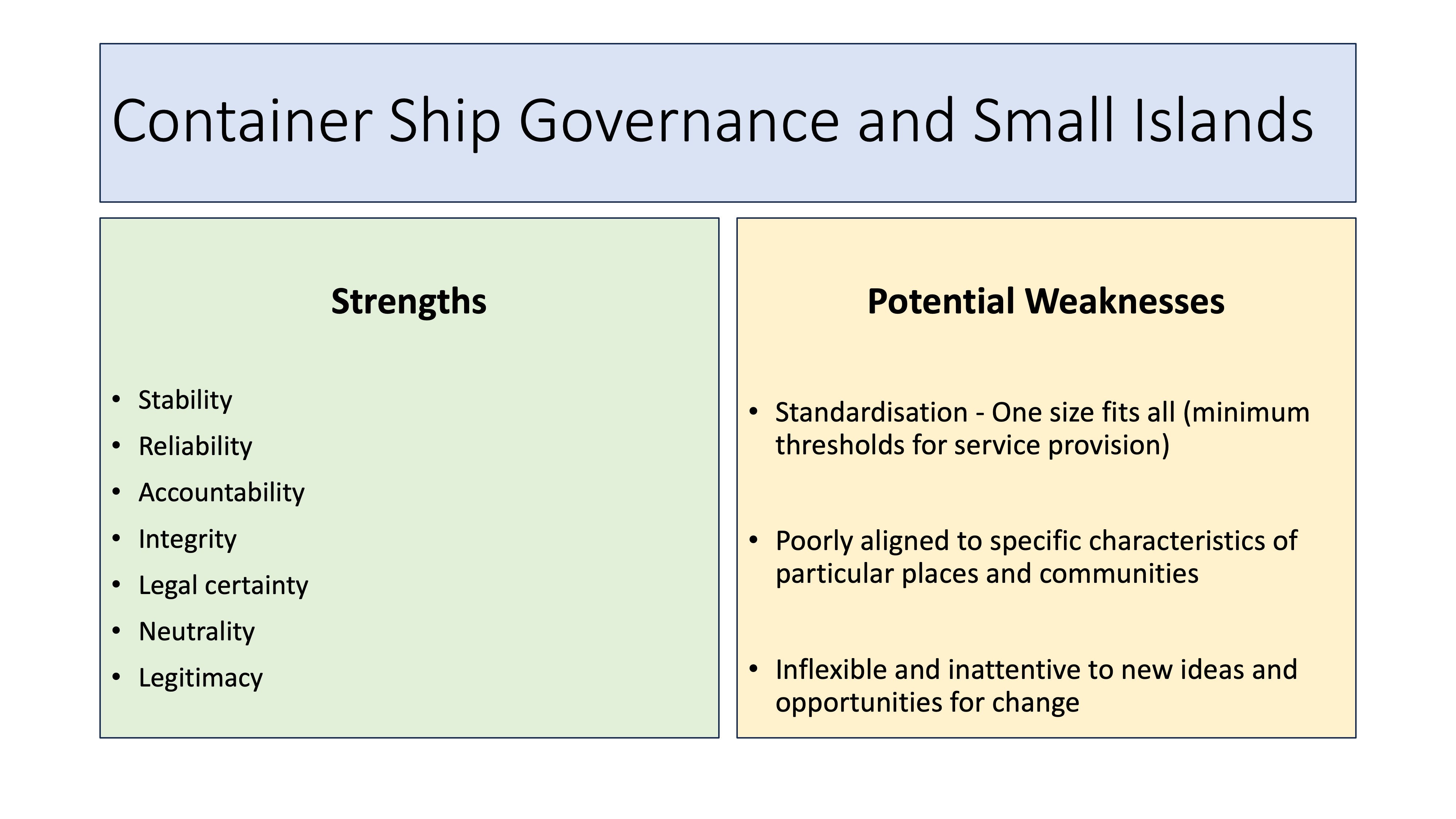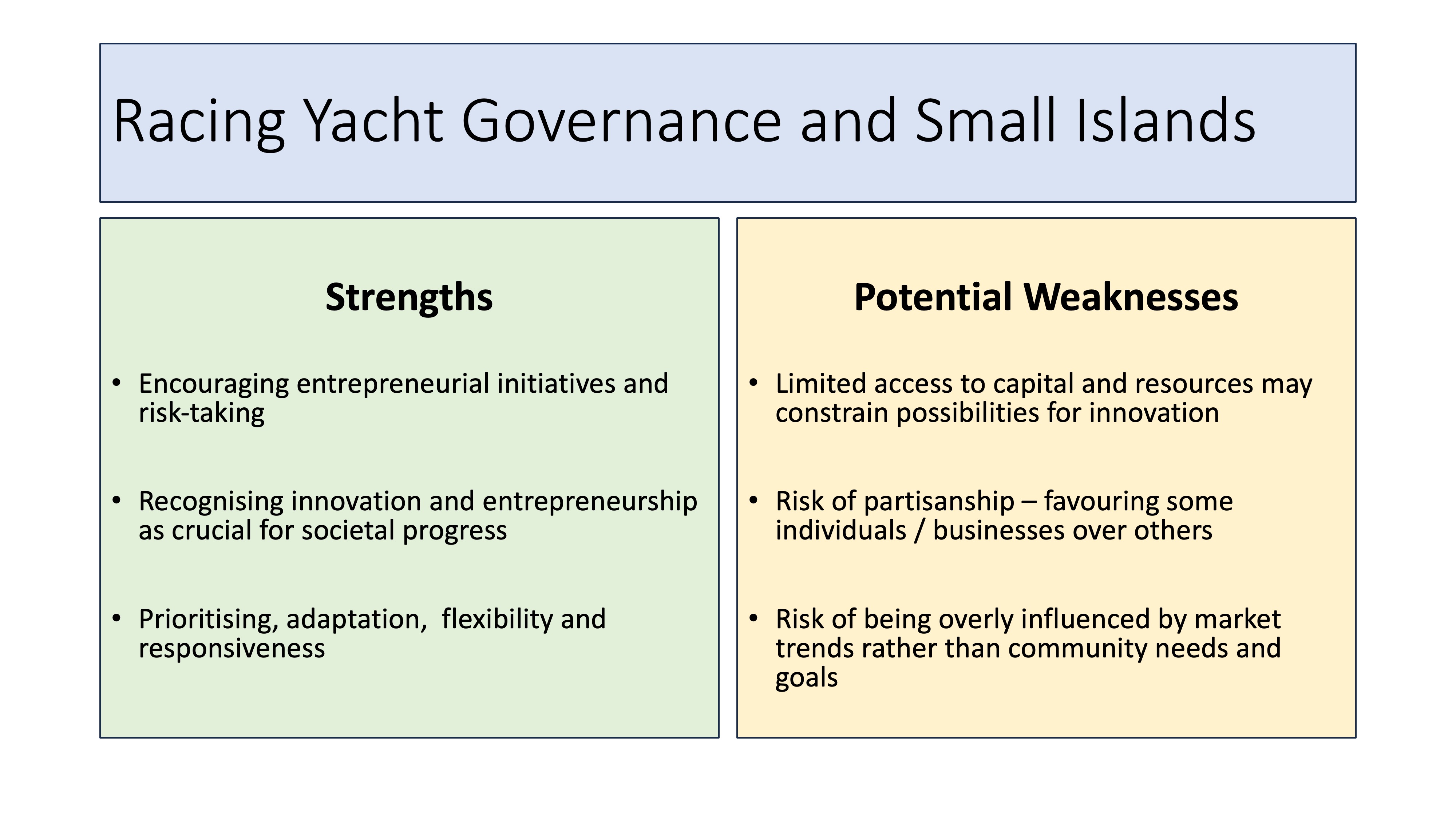Islands face specific sets of challenges with respect to the future development, whether in relation to infrastructure provision, circular economy, seasonality digitalisation, climate change adaption or the fostering of economic innovation. Although governance arrangements for small islands differ significantly, it is possible to identify, at a higher level of abstraction, two generalised models of governance. This blog is based on the FREIIA White Paper: Exploring the Blackbox of Innovation by Governance Tools – learning from North Sea Islands by Simon Tijma, Bonnie Lewtas, Cormac Walsh and Han Brezet, and a presentation given by Cormac Walsh on 18.04.2024 on Bornholm.

Our first governance model is that of a container ship and follows the teaching of Max Weber. The container ship is stable, resilient and durable. It will reliably reach its destination, no matter the weather. It is built to withstand turbulent seas. To ensure efficiency and smooth running, goods are transported in standardised containers, according to agreed international norms, and all crew members have clearly defined tasks and responsibilities.


Our second governance model is a sea-going racing yacht, inspired by the work of Joseph Schumpeter. This model is also capable of navigating turbulent waters and taking advantage of favourable winds. In contrast to the container ship, the racing yacht can change course quickly in response to changing conditions and is constantly searching for the best course to ensure comparative advantage. The racing yacht, however, is not for everyone. Space on board is limited, and a spirit of adventurous risk-taking is a prerequisite.

Small islands require a combination of both governance models. Local government must be in a position to provide necessary infrastructure and services, and have the capacity to the keep the show on the round, even in the face of external challenges. Here, the advantages of the container ship model come into play. Flexibility is nevertheless required to take into account of the specificity of island circumstances (e.g. provision of education and health services even where population levels are below minimum thresholds). Local government must, however, also recognise and promote island-based innovation. This requires listening to island communities and careful consideration of the best course to navigate for each particular island. Building on a solid, stable foundation, local government can create the conditions necessary for allowing island-based innovative solutions to emerge and grow into practical actions.